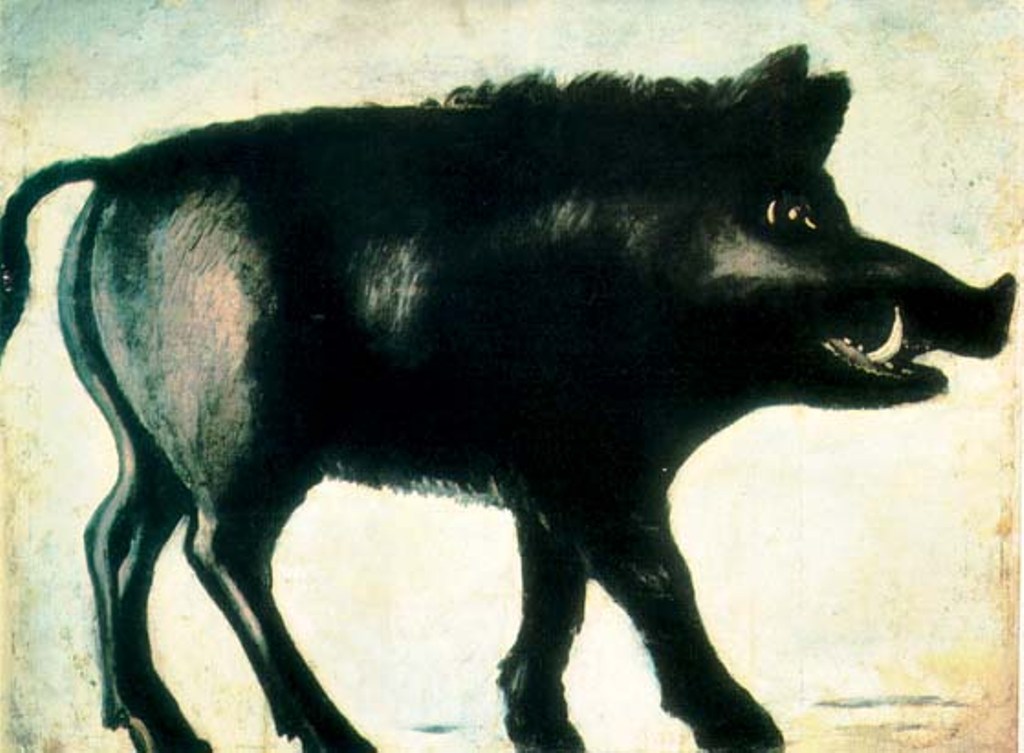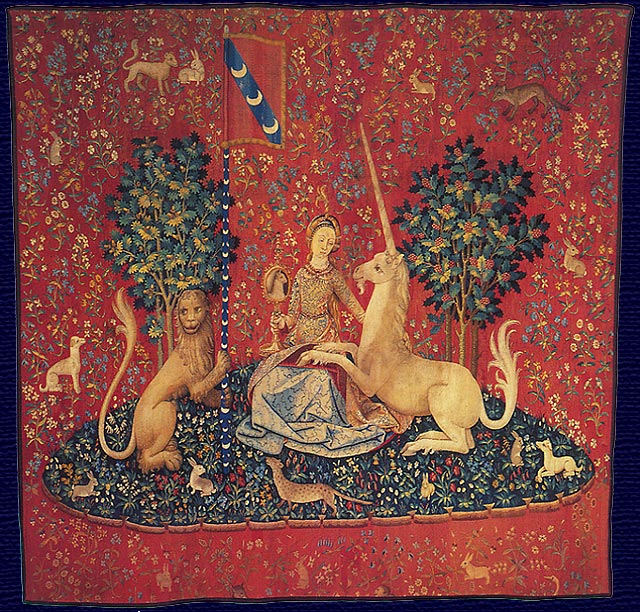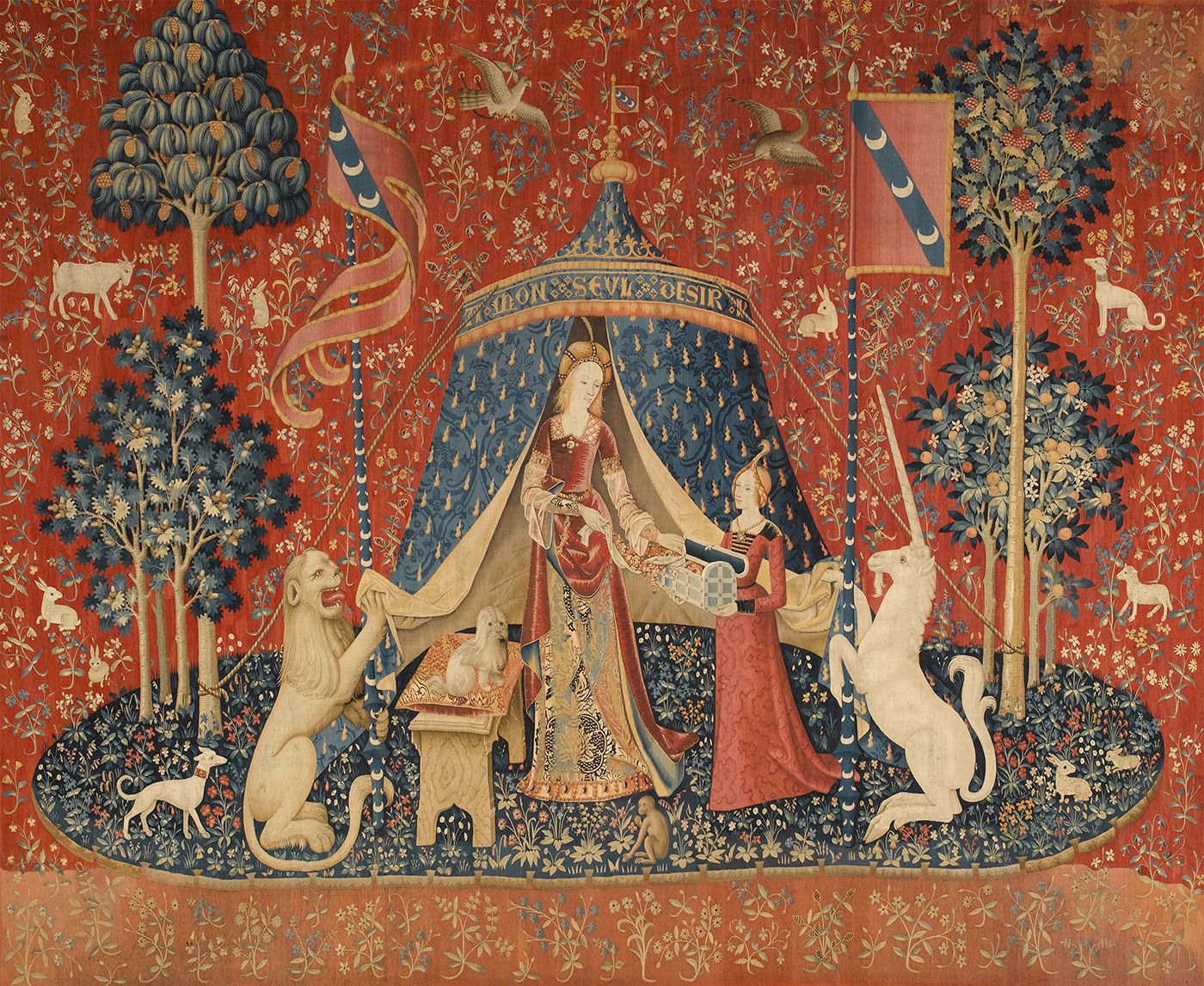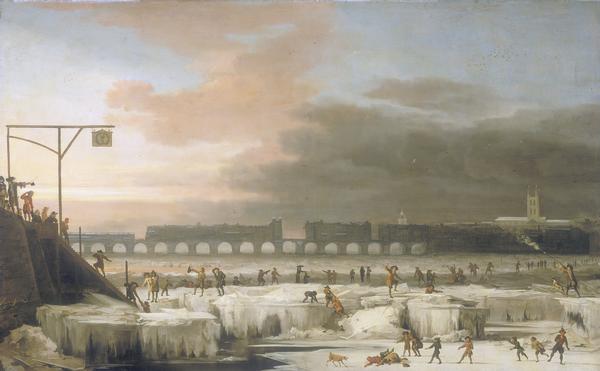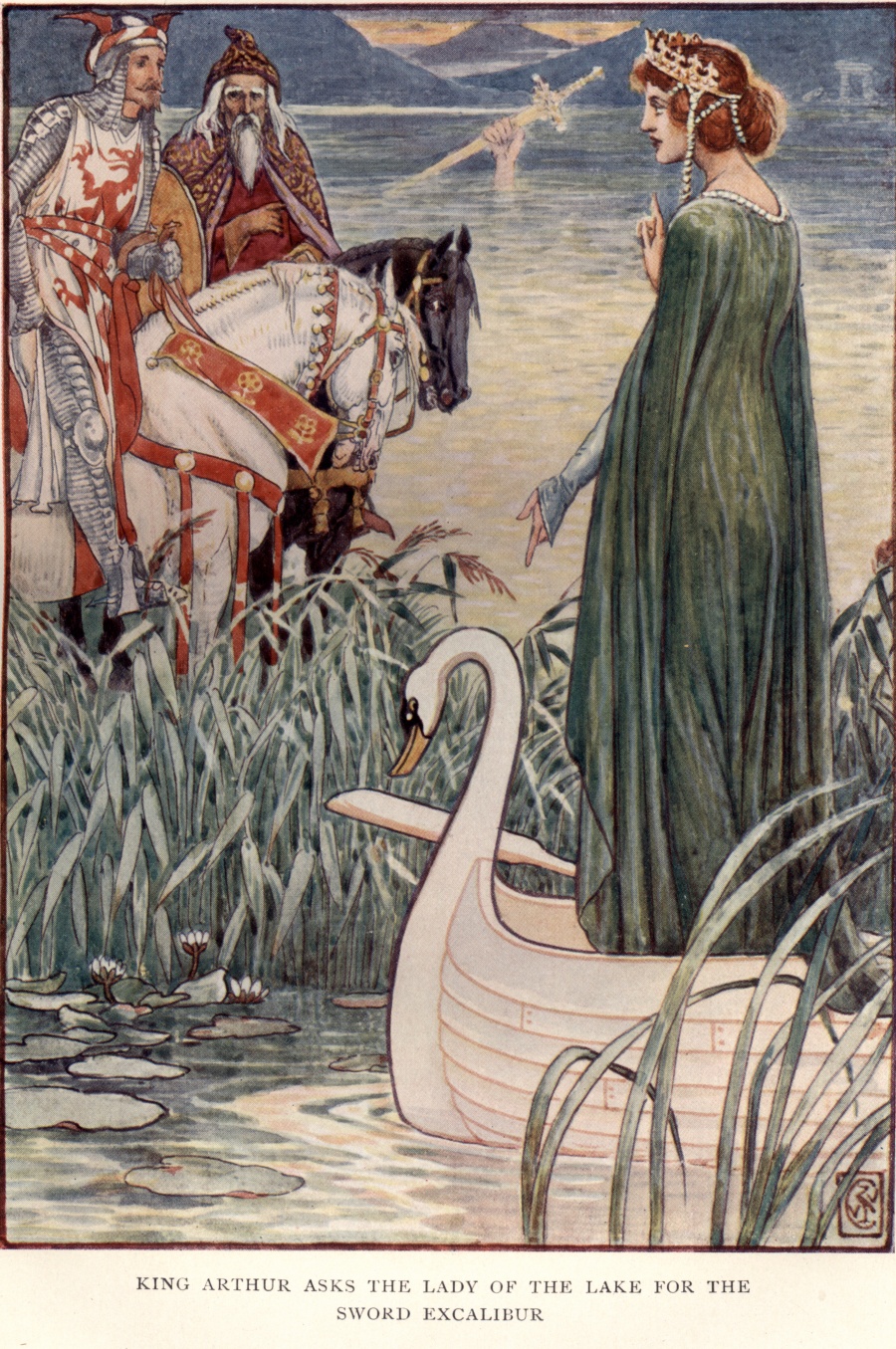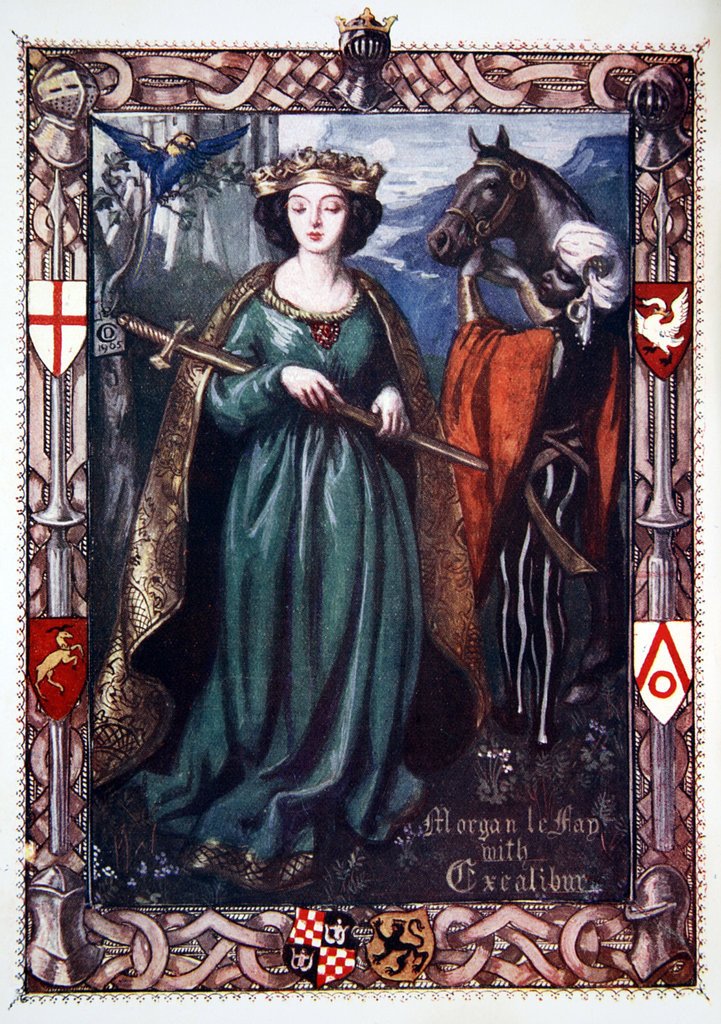This article was first published on #FolkoreThursday.com under the title, Exploring the Otherworld of the Celts, on 18 March, 20211, written by zteve t evans. This work has been revised and edited and different images added 3rd February 2024.
Entry to the Otherworld
The concept of an enchanted and mysterious “Otherworld” has been a typical feature in numerous myths and legends across a wide range of human cultures throughout history. The ancient Celtic people also had their version of this enigmatic and ethereal region. Their territories included Ireland, the British Isles, and a swathe of continental Europe to Anatolia, West Asia, now part of Turkey and included parts of the Iberian Peninsula. Across this vast area, there were variations in beliefs and ideas about the Otherworld. This work briefly explores their concept of the Otherworld and how it varied in different parts of the Celtic world.
Celtic Mythology
The Celtic Otherworld is frequently depicted as the realm where their deities reside, the abode of their deceased, or a harmonious combination of both. In alternate narratives, it is described as a magical paradise where inhabitants revel in perpetual youth, good health, and beauty, leading lives filled with joy and abundance, all their needs automatically met. This Otherworld is often associated with mystical entities such as fairies, Twylyth Teg, the aos sí, and other magical beings.
Entry to the Otherworld
Access to the Otherworld is typically concealed and challenging to discover, but specific individuals of merit manage to reach it through personal endeavours. Others might receive invitations, be guided by their residents, or follow given signs. Entrance may be facilitated through ancient burial mounds or by traversing over or under bodies of water, like rivers, pools, or seas. Certain locations, including specific lakes, bogs, caves, burial mounds, or hills, were believed to serve as portals to and from the Otherworld.
Another theory posits that the Otherworld exists in a parallel dimension, akin to a mirror world alongside the earthly realm. During specific periods, such as Samhain and Beltane, the barrier separating the two realms weakens, making the transition between them possible.
Annwyn: The Welsh Otherworld

In Welsh mythology, the Otherworld is commonly referred to as Annwn or Annwfn, with indications in Welsh tradition suggesting the existence of diverse realms or regions within its confines.
It is common in Celtic tales for a stag or deer to lead hunters into otherworldly encounters, entwining them in its affairs. An example of this is found in the First Branch of the Mabinogi, recounting the story of Pwyll, Prince of Dyfed.
While hunting in Glyn Cuch, Pwyll, having become separated from his companions, stumbles across a pack of strange white hounds with red ears mauling on a slain stag they had brought down. This event is the catalyst for an encounter with the Otherworld. The red-eared hounds belong to Arawn, the magical king of the Otherworld of Annwn, who arrives on a dappled grey horse and is outraged to find Pwyll has for driving off his dogs and claiming the stag as his own.
To assuage Arawn’s anger over the stag, Pwyll agrees to spend one year and one day in an exchange of bodies, with the mission of defeating Hafgan, another king of Annwn. This exchange means Pwyll will inhabit Arawn’s body and Arawn his for that time. The story suggests the possibility of multiple kingdoms within the Otherworld: Arawn’s kingdom of Annwn, another unnamed ruled by Hafgan, and a third where Rhiannon came from, which also is unnamed.
Arawn invites Pwyll to his hall and escorts him safely through Annwn to reach it to accomplish the task, ultimately uniting the two otherworldly realms under one monarch. During this exchange of bodies, Pwyll is presented with the opportunity to be intimate with Arawn’s beautiful wife, a queen and a representative of a goddess of sovereignty. Demonstrating his integrity as the ruler of Dyfed, Pwyll refrains from taking advantage of the situation, respecting both the queen and the sacred connection between rulership and the land.
Subsequently, a mysterious lady named Rhiannon arrives from the Otherworld, possibly from a different realm within. Her appearance is enigmatic, clad in white and gold, riding serenely upon a shining white horse. Despite being pursued by Pwyll’s fastest horses, some magical force prevents them from catching up. Only when Pwyll personally gives chase and requests her to stop does she finally halt, revealing her purpose—to ask Pwyll for marriage, an offer he accepts.
Irish Mythology – Oisin in Tír na nÓg

Within Irish mythology, the Otherworld goes by various names, with Tír na nÓg, or the Land of Youth, being one of the most renowned. The tale of Oisín and Niamh of the Golden Hair vividly portrays life in Tír na nÓg, presenting multiple versions of this captivating narrative.
Similar to the arrival of Rhiannon in the Welsh tale, Niamh emerges as another otherworldly woman, riding a magical white horse and proposing marriage to an earthly man. Oisín, engrossed in hunting deer, accepts her proposal and is transported to Tír na nÓg, seated behind Niamh on the enchanted horse that gallops effortlessly across the sea. Upon arrival, he discovers a paradise where his thoughts materialize into reality.
Despite the luxurious and indulgent life, Oisín, a man of action, yearns for the thrill of the hunt. His wishes are granted, and he enjoys exhilarating hunts that always culminate in a perfect ending. The stag provides an exciting chase, followed by a noble death just before supper, with a magical hunting lodge and sumptuous banquet appearing effortlessly. Yet, the experience lacks the rawness and uncertainty of a genuine chase.
Bored with the predictable life, Oisín desires danger and combat. His wish is fulfilled, but the battles are orchestrated magically. He faces an ogre holding a princess captive, sustains wounds, but is healed by Niamh and never truly endangered. He triumphs over his foe, liberating the princess.
After living happily with Niamh in her land, he yearns to return to Ireland. Niamh reluctantly grants Oisín’s wish, lending him her magical white horse. However, she warns him not to touch the soil of Ireland. Upon his return, Oisín realizes that what seemed like a short stay in Tír na nÓg was, in reality, hundreds of years. His family and friends are long gone, and Christianity has replaced the older religious ways he knew. Unfortunately, Oisín falls from his horse while assisting a group of workmen. On touching the Irish soil, time catches up with him, and he instantly transforms into an dying aged man and, before he dies, shares his adventures in Tír na nÓg with Saint Patrick before passing away.
Continental Celtic Mythology
On the European continent, the Gauls divided the Otherworld into three parts: Albios, Bitu, and Dubnos. Albios represented the upper world or heaven, also known as the white world. Bitu was the world of living beings or the earthly realm, while Dubnos signified the underworld, lower world, dark world, or hell.
The Celts left scant written records of their beliefs, and much of the available information comes from non-Celtic sources that might have imposed their interpretations. Lucan, a Roman poet, asserted that Gaulish druids believed in an Otherworld he called Orbis aloha, where souls went before reincarnation.Procopius of Caesarea, a Byzantine scholar, believed the land of the dead for ancient Gauls lay west of Britain. According to him, the souls of the departed travelled to the northwestern coast of Gaul, took a boat to Britain, and then visited the homes of local fishermen. These fishermen ferried the souls of the dead across the sea to their final destination.
Breton and Galician folklore still retain remnants of these beliefs. In Breton tradition, the ships that transported the dead to the Otherworld were known as Bag an Noz. In his book “La légende de la mort chez les Bretons Armoricains,” Anatole Le Braz describes processions of souls traversing the land to reach the coast, where they began their voyage to the Otherworld.
In examining these few instances, it becomes apparent that the concept of the Celtic Otherworld exhibited diversity across regions, with variations even within individual areas. The depictions of the Otherworld range from magical and enchanting to dark and disturbing, mirroring the nuanced nature of the earthly world experienced by humans in contemporary times.
The concept of an enchanted and mysterious “Otherworld” has been a typical feature in numerous myths and legends across a wide range of human cultures throughout history. The ancient Celtic people also had their version of this enigmatic and ethereal region. Their territories included Ireland, the British Isles, and a swathe of continental Europe to Anatolia, West Asia, now part of Turkey and included parts of the Iberian Peninsula. Across this vast area, there were variations in beliefs and ideas about the Otherworld. This work briefly explores their concept of the Otherworld and how it varied in different parts of the Celtic world.
© zteve t evans
Reference, Attributions and Further Reading
Copyright zteve t evans
- Celtic Otherworld – Wikipedia
- Annwn – Wikipedia
- The Mabinogion and the Four Branches of the Mabinogi – The Mabinogi of Pwyll
- Welsh Mythology: Pwyll’s Sojourn in Annwfn – Under the influence!
- Tír na nÓg – Wikipedia
- Oisín – Wikipedia
- Otherworld – Wikipedia
- Religion of the Ancient Celts by J. A. MacCulloch
- Image by conjured and modified by zteve t evans using Bing Image Creator from Designer using the commands, “A misty strange world with a stag, a wolf, a raven, a waterfall, a young man and woman in a forest, in the distance a road leading to a mountain in the style of Gustav Klimt.” – ” 23 January 2024
- Image Otherworld Hunt conjured and modified by zteve t evans using Bing Image Creator from Designer using the commands, “an otherwordly forest featuring a stag being chased a pack of white hounds with red ears by a dark king riding a grey horse in the style of Edvard Munch, 22 January 2023.
- Image Niamh of the Golden Hair” conjured by zteve t evans usinf Bing Image Creator from Designer using the commands A princess with long golden hair, dressed in white riding a white horse over the sea waves while sun is setting in the style of the pre-raphaelites – 22 January 2024














